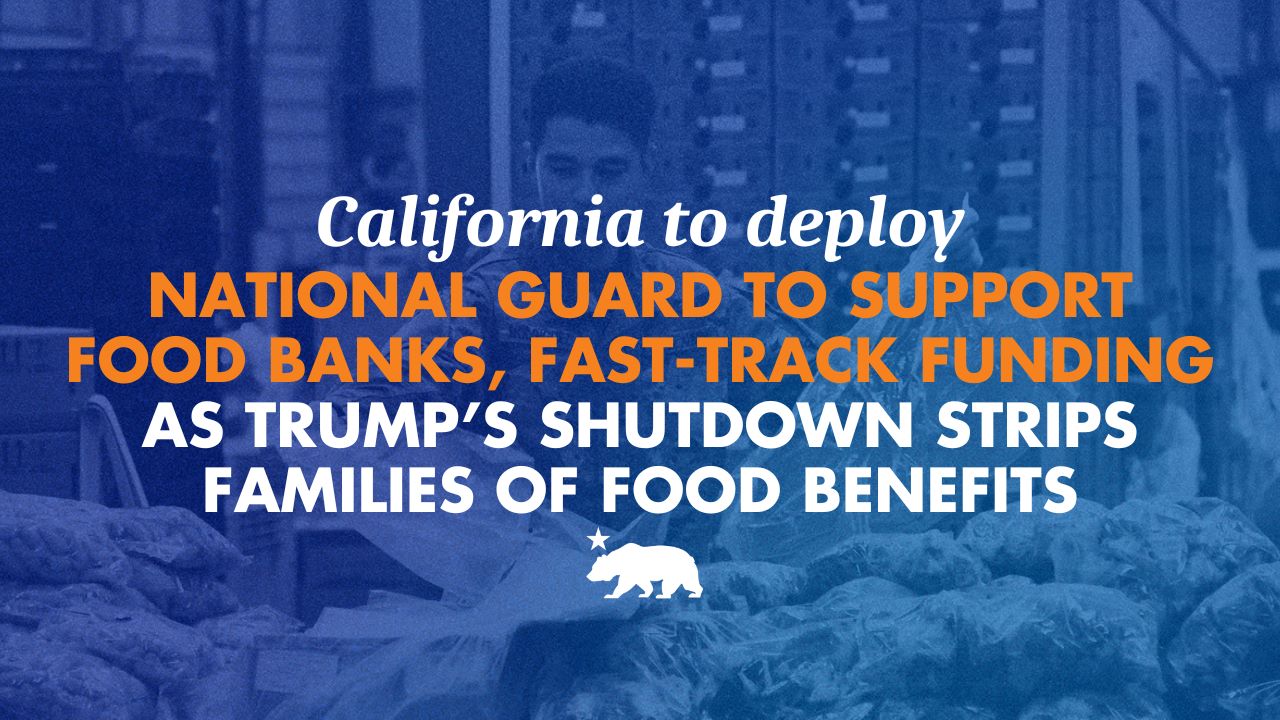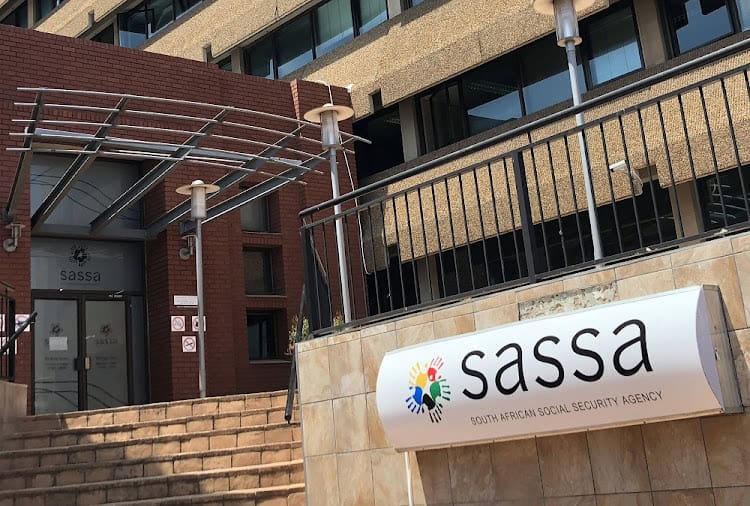Report on California’s Response to Federal Food Benefit Delays and Alignment with Sustainable Development Goals
1.0 Executive Summary
This report details the State of California’s emergency response to the delay of federal Supplemental Nutrition Assistance Program (SNAP) benefits, affecting 5.5 million residents due to a federal government shutdown. The state’s intervention, announced on October 22, 2025, involves fast-tracking up to $80 million in state funds and deploying the California National Guard and California Volunteers for a humanitarian mission to support food banks. This initiative directly addresses multiple United Nations Sustainable Development Goals (SDGs), primarily focusing on ensuring food security and protecting vulnerable populations.
2.0 Impact on Sustainable Development Goals (SDGs)
The federal shutdown and subsequent delay in food benefits pose a direct threat to the achievement of several SDGs within California. The state’s response is a targeted effort to mitigate these negative impacts.
- SDG 2 (Zero Hunger): The core of the state’s mission is to prevent widespread food insecurity and hunger by bolstering the capacity of food banks to meet increased demand. This action ensures that families, particularly those newly enrolling in CalFresh, have access to essential nutrition.
- SDG 1 (No Poverty): By providing an essential food safety net, the state is preventing millions of low-income individuals and families from falling deeper into poverty due to the loss of federal support.
- SDG 3 (Good Health and Well-being): Access to food is a fundamental determinant of health. The intervention supports public health by ensuring continuous access to nutrition, which is critical for preventing malnutrition and related health issues.
- SDG 10 (Reduced Inequalities): The shutdown disproportionately affects the most vulnerable communities. California’s proactive measures aim to reduce this inequality by providing a buffer against the sudden loss of federal aid.
- SDG 16 (Peace, Justice and Strong Institutions): The state government is demonstrating institutional resilience and a commitment to social justice by stepping in to fill a critical service gap created at the federal level, thereby ensuring the well-being of its citizens.
- SDG 17 (Partnerships for the Goals): The response exemplifies a multi-stakeholder partnership, involving the Governor’s Office, the California Military Department, Cal OES, and California Volunteers, all collaborating to achieve the common goal of food security.
3.0 State-Level Strategic Response
Governor Gavin Newsom has authorized a multi-faceted strategy to counteract the effects of the federal funding delay. This strategy is modeled on a similar successful deployment during the COVID-19 pandemic in 2020.
- Financial Mobilization: The state is expediting up to $80 million in funding to support food banks across California, ensuring they have the resources to acquire and distribute food.
- Humanitarian Deployment: The California National Guard and California Volunteers, including California Service Corps members, are being deployed on a humanitarian mission. Their role is to provide logistical support to food bank operations, not to act in a law enforcement capacity.
- Inter-Agency Collaboration: The mission is a coordinated effort between the Governor’s Office, the California Military Department, the Governor’s Office of Service and Community Engagement (GO-Serve), and Cal OES to ensure efficient and effective distribution of resources.
4.0 Conclusion
The State of California’s rapid mobilization of financial and human resources demonstrates a robust commitment to protecting its residents from the immediate consequences of the federal government shutdown. By ensuring food security for 5.5 million people, the state is not only providing a critical safety net but is also actively upholding its commitment to the Sustainable Development Goals, particularly the mission to achieve Zero Hunger and reduce inequality. This intervention highlights the crucial role of strong state-level institutions in safeguarding public well-being and advancing global sustainability objectives.
Analysis of Sustainable Development Goals in the Article
1. Which SDGs are addressed or connected to the issues highlighted in the article?
-
SDG 2: Zero Hunger
- The article’s primary focus is on the disruption of food benefits (SNAP/CalFresh) for 5.5 million people, which directly threatens their food security. The government’s response, including funding food banks and deploying personnel to distribute food, is a direct action to combat hunger.
-
SDG 1: No Poverty
- SNAP benefits are a critical social safety net designed to alleviate poverty by helping low-income families afford food. The article highlights how the shutdown is “taking food out of people’s mouths” and affecting “families who were already struggling to get by,” linking the loss of these benefits directly to increased hardship and poverty.
-
SDG 16: Peace, Justice and Strong Institutions
- The article contrasts the failure of federal institutions (“Trump’s failure,” “federal cowardice”) due to the government shutdown with the responsive and effective actions of state-level institutions. The California government, including the Governor’s Office and the National Guard, is stepping in to “fill in the gaps,” demonstrating the role of effective sub-national institutions in protecting citizens when national ones fail.
-
SDG 17: Partnerships for the Goals
- The response described is a multi-stakeholder partnership. The article details a collaboration between various state entities (“California National Guard,” “California Volunteers,” “Cal OES”) and civil society organizations (food banks) to execute a “humanitarian mission.” This coordinated effort exemplifies a partnership to achieve a common goal.
2. What specific targets under those SDGs can be identified based on the article’s content?
-
Target 2.1: By 2030, end hunger and ensure access by all people, in particular the poor and people in vulnerable situations, including infants, to safe, nutritious and sufficient food all year round.
- The article directly addresses this target by describing emergency measures to provide food to 5.5 million CalFresh recipients who are at immediate risk of hunger due to the delay in their benefits.
-
Target 1.3: Implement nationally appropriate social protection systems and measures for all, including floors, and by 2030 achieve substantial coverage of the poor and the vulnerable.
- The article centers on the disruption of the SNAP/CalFresh program, a key social protection system in the U.S. The state’s intervention is an emergency measure to maintain a social protection floor when the federal system is failing its beneficiaries.
-
Target 16.6: Develop effective, accountable and transparent institutions at all levels.
- The article showcases the California state government acting as an effective and accountable institution by taking “immediate action” to address the crisis caused by the federal shutdown, thereby fulfilling its responsibility to its citizens.
-
Target 17.17: Encourage and promote effective public, public-private and civil society partnerships, building on the experience and resourcing strategies of partnerships.
- The deployment of the California National Guard and California Volunteers to “support food bank operations” is a clear example of a public-civil society partnership designed to efficiently address the food crisis.
3. Are there any indicators mentioned or implied in the article that can be used to measure progress towards the identified targets?
-
Indicators for Target 2.1 (Zero Hunger):
- Number of people requiring food assistance: The article explicitly states that the shutdown affects “5.5 million Californians” on SNAP benefits.
- Financial resources mobilized: The article mentions California is “fast-tracking up to $80 million in state funds” to support food banks.
- Volume of food distributed: While not providing a current number, the article references a past, similar mission that served “more than 800 million meals,” implying this is a key metric for success.
-
Indicator for Target 1.3 (No Poverty):
- Proportion of population covered by social protection systems: The article identifies the “5.5 million enrollees” in CalFresh, which serves as a direct measure of the population covered by this specific social protection program in California.
-
Indicator for Targets 16.6 & 17.17 (Strong Institutions & Partnerships):
- Human resources mobilized for humanitarian response: The article mentions the deployment of the “California National Guard” and “California Volunteers,” which can be quantified to measure the scale of the institutional and partnership-based response.
4. Summary of SDGs, Targets, and Indicators
| SDGs | Targets | Indicators |
|---|---|---|
| SDG 2: Zero Hunger | 2.1: End hunger and ensure access for all people to safe, nutritious and sufficient food. |
|
| SDG 1: No Poverty | 1.3: Implement nationally appropriate social protection systems for all. |
|
| SDG 16: Peace, Justice and Strong Institutions | 16.6: Develop effective, accountable and transparent institutions at all levels. |
|
| SDG 17: Partnerships for the Goals | 17.17: Encourage and promote effective public, public-private and civil society partnerships. |
|
Source: gov.ca.gov






